Free walking tour of Reykjavik by City Walk: A review
I highly recommend taking a walking tour when you first arrive in any new city or country. It helps give you the general overview in terms of history as well as an idea of the layout of the most visit-worthy parts of the city. Following my own advice, on our first day in Reykjavik we – my husband Albert and I – took the “free” walking tour offered by City Walk Reykjavik.
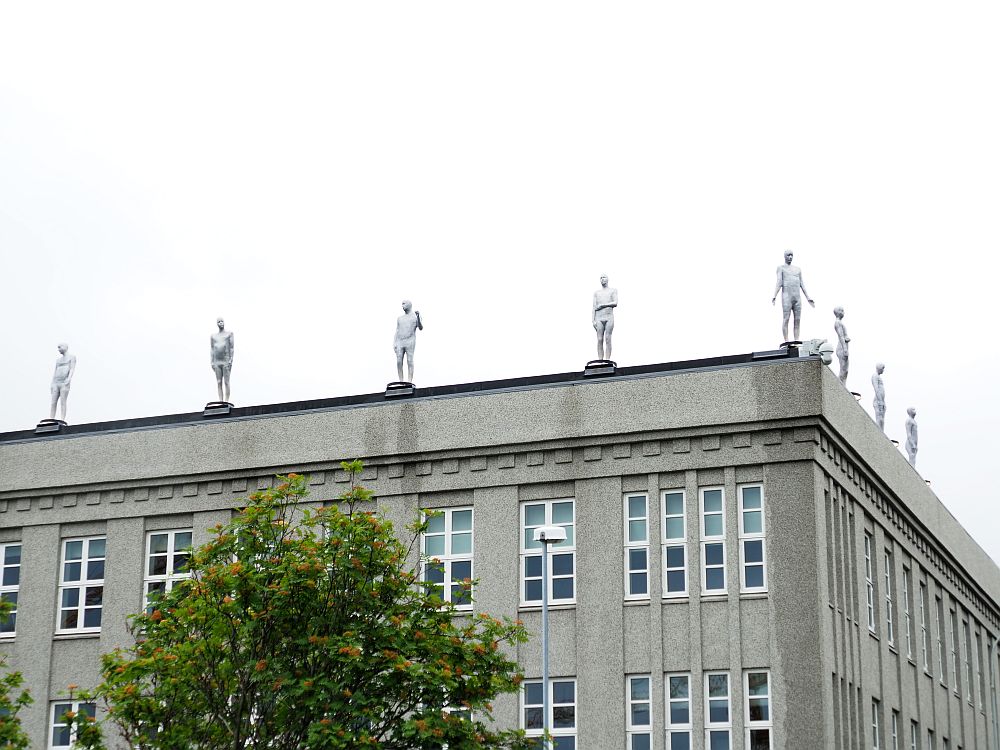
The advantage of a “free” tour is that you can decide for yourself how much you pay. As I had hoped, the tour turned out to be a great introduction to Iceland’s history – not only Reykjavik’s – which served us well for the rest of our three-week trip.
Disclosure: This article contains affiliate links. If you make a purchase through one of the links, I will receive a small commission. This will not affect your price.
City Walk Reykjavik did not sponsor me in any way and the guide did not know I would write about it.
History of Reykjavik and Iceland
We started in a little park in front of Reykjavik’s Parliament building under a misty rain, where our guide, Erik, gave us a general overview of the history.
While Vikings first came to Iceland and, in particular, Reykjavik, in the 9th century, Reykjavik didn’t really become an urban center until the 19th century. Ruled by Denmark starting in the 18th century, it was very much influenced in terms of industry, trade and culture by the Danes. When Iceland gained home rule in 1904 and then became a nation under the Danish crown, Reykjavik was the obvious capital city.
Erik’s story about World War II surprised me: I never knew that the British and then the Americans had actually occupied and ruled Iceland during the war. The transfer of power happened peacefully, however; it sounds like the Icelanders understood the importance of its location in cross-Atlantic shipping. Iceland didn’t become truly independent until 1944, when it declared itself a republic, but they allowed the Americans to stay until the war’s end.
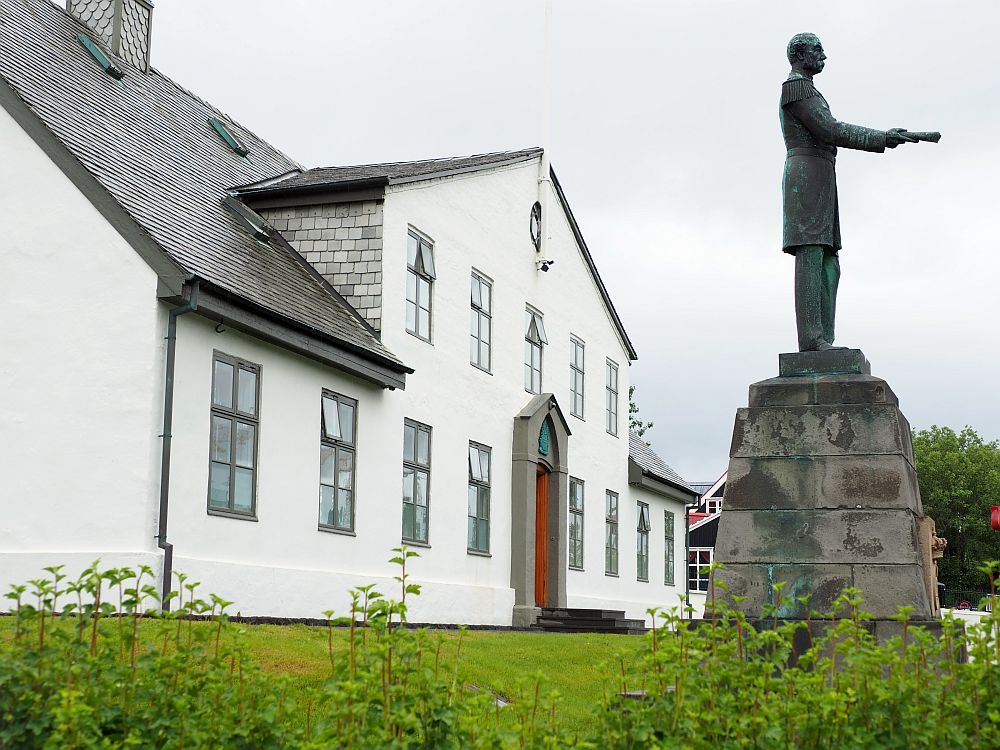
We learned more about the Vikings who settled Iceland later in our trip at the Settlement Exhibition in Reykjavik and the Settlement Center outside of the city. We learned about Iceland’s role in the World War II when we visited the Icelandic Wartime Museum in western Iceland. You can read about these and what else there is to see in Iceland in 3-week Iceland itinerary: the best Iceland road trip. In any case, the walking tour gave us a shorter, easy-to-follow overview of the history.
If you haven’t booked your accommodations in Reykjavik yet, do it here through clicking on the map below:
Learning about Reykjavik
On the tour, I particularly liked the old part of Reykjavik, where some houses date to the 19th century. Not surprisingly, they reminded me of wooden houses I saw in Denmark. I found it hard to even tell which were older, though, since many have an outer shell of corrugated iron. Erik told me that all of the older ones are made of wood, but that the corrugated metal we see has been added to protect the wood.
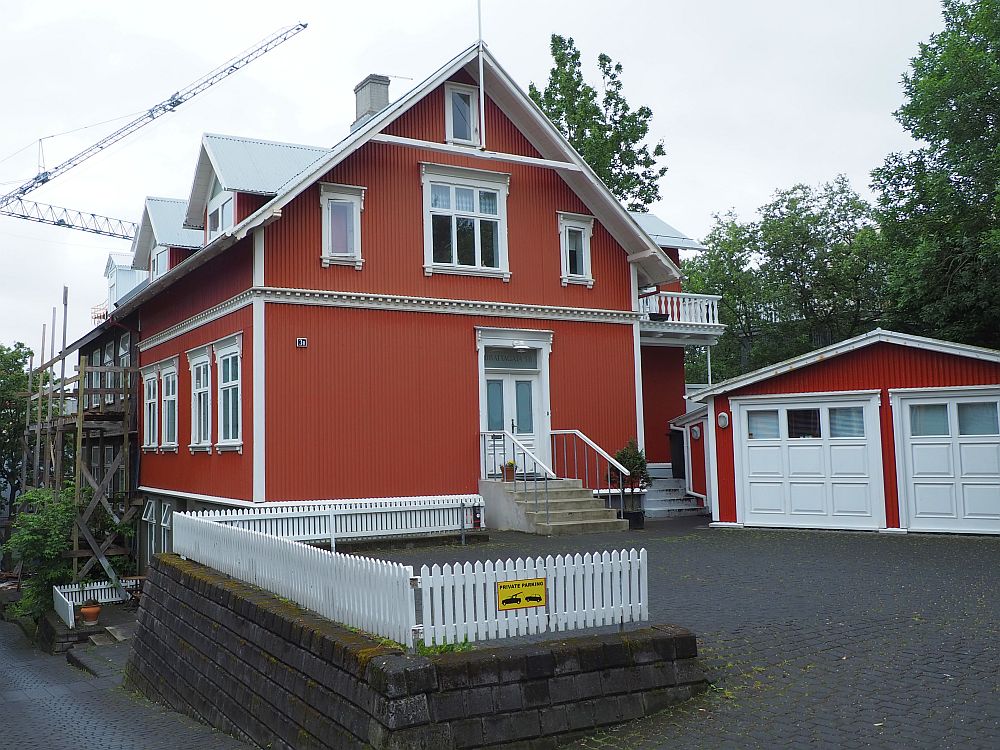
Erik told us an interesting thing about how Reykjavik is heated. I knew vaguely that Reykjavik has geothermal energy. I didn’t know that geothermal energy provides hot water and heat to every home in Reykjavik. It comes out of the ground at about 75°C, so even if it cools on the way to the houses, heating costs are extremely low. According to Erik, many people will heat their homes very warm, even in the middle of winter, and leave windows wide open.
This abundance goes so far that in parts of the city the hot-water pipes have been laid under the streets. That means that, unless the snow falls particularly heavily and fast, the heat from the pipes keeps the roads clear! Isn’t that clever?
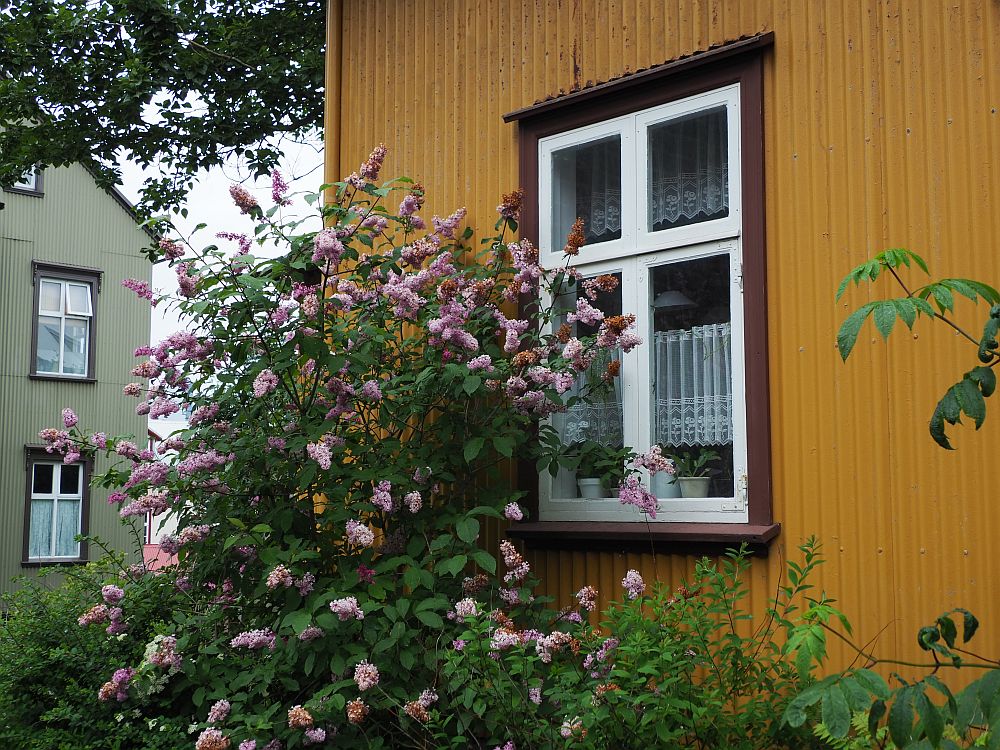
It also explains why the hot water that you run from the tap in Reykjavik – and many other parts of the country – smells of sulphur. I guess people get used to the smell. Fortunately, the cold water from the tap does not smell or taste sulphurous.
Highlights of the free walking tour of Reykjavik
Hallgrimskirkja is probably the most well-known building in Reykjavik. On the tour we saw it from a distance, at the end of a street called Skólavörðustígur. The street was painted in rainbow colors in 2015 for that year’s Reykjavik Pride. It was so popular that the city council decided to allow the street to stay rainbow-colored permanently.
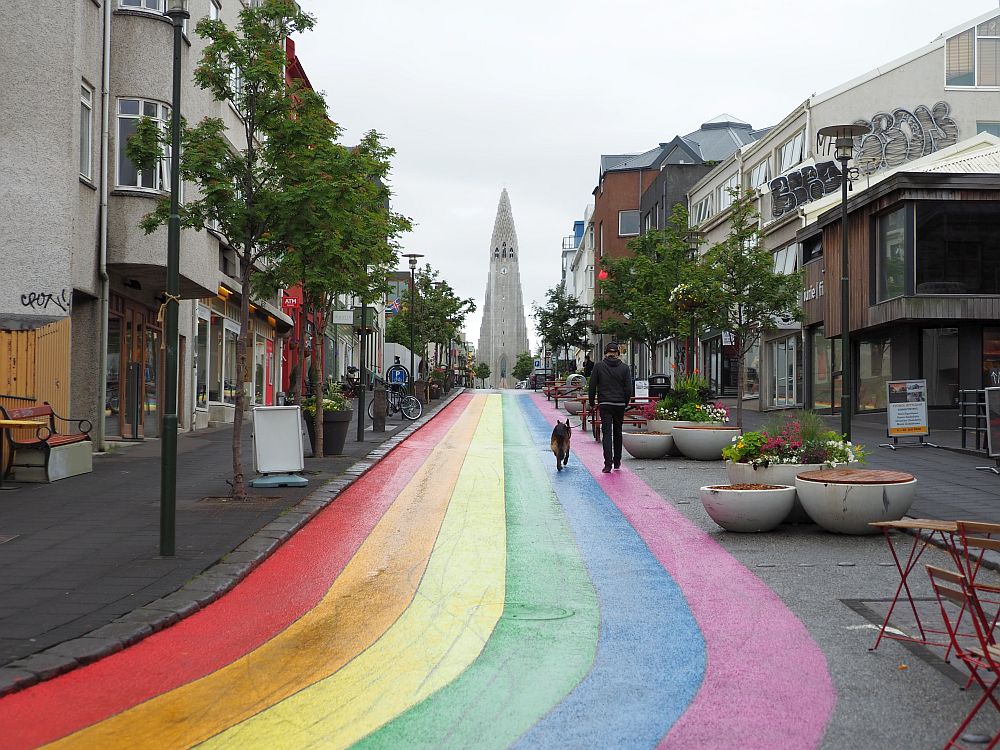
Anyway, Hallgrimskirkja’s shape was not intended to look like a rocket ship – but it does. Rather, it mirrors the Icelandic landscape, particularly its basalt columns and waterfalls.
Surprisingly, that enormous church is not the country’s cathedral. The more modest church from 1796 in the middle of town – where our tour started – is actually the cathedral.
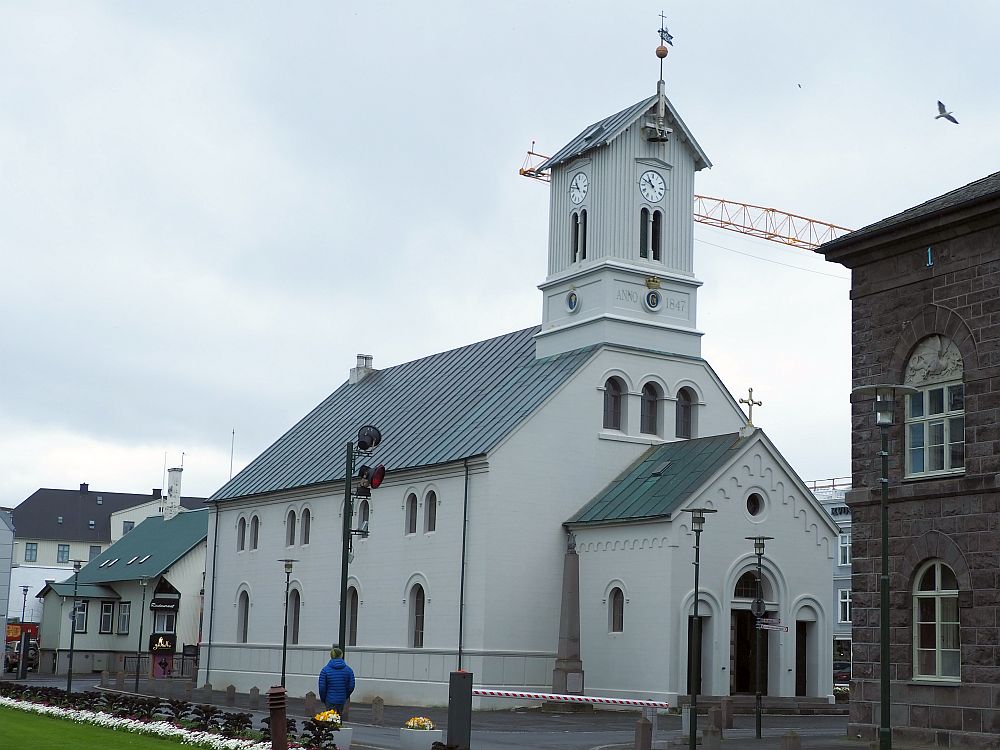
Our guide also told us about events in Iceland’s history that helped to show how precarious life used to be in Iceland. Mostly this concerned volcanic eruptions or plagues wiping out large segments of an already fairly small population.
Iceland’s population today is only about 350,000, and more than half of those live in the region around Reykjavik. Erik told us about the genealogical and DNA records kept on Iceland’s population. Having such records, he explained, had helped the country keep Covid-19 infections down through effective contact tracing.
The tour passed political sites including the Parliament Building and the Prime Minister’s house, where we heard an overview of how Iceland’s government works.
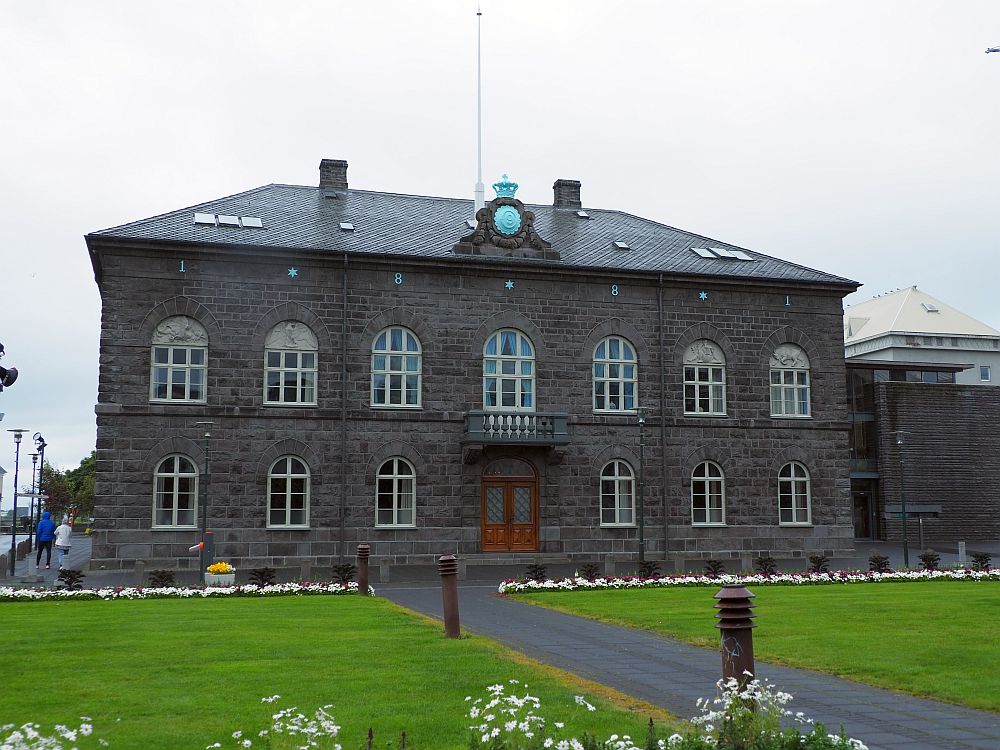
We stopped in Anarholl Park, with its Einar Jonsson sculpture depicting one of the first Viking settlers.

From the park, Erik pointed out the Harpa Building, a stunning modern glass concert hall.
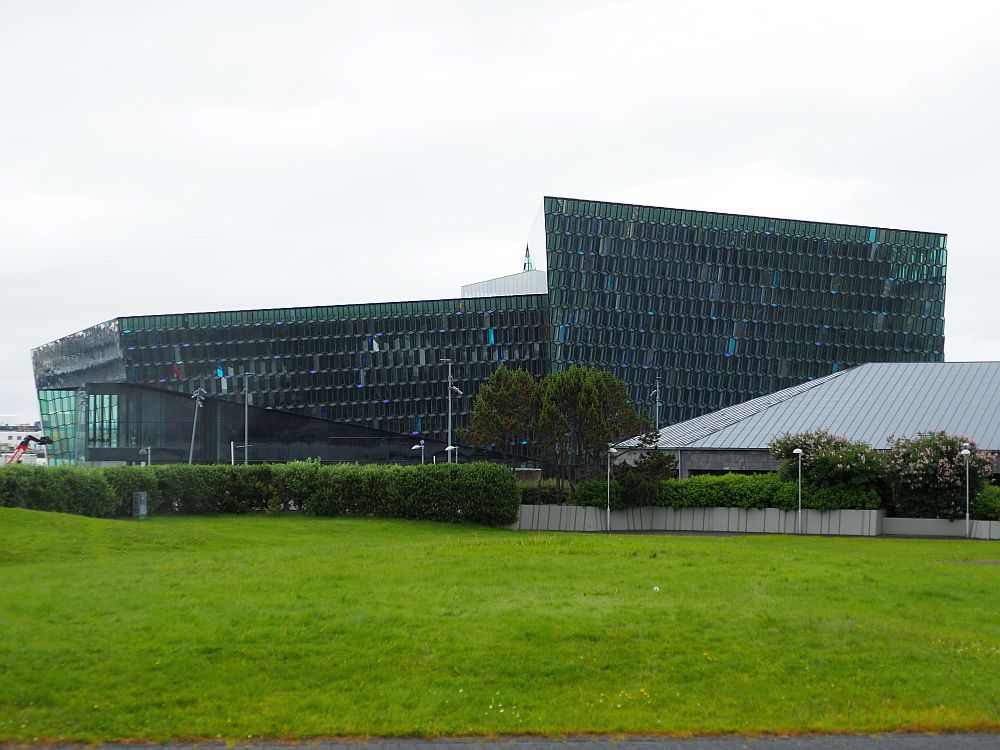
Walking along Tjornin Pond would have been pleasant if it hadn’t been such a grey, misty day. The walk took us past a piece of street art that I loved, though: a statue called “The Unknown Bureaucrat” by Magnus Tomasson. There’s quite a bit of great street art in Reykjavik, so keep your eyes open.

Erik ended our tour at Reykjavik City Hall, a rather ugly concrete building. Inside, though, is a huge 3-D map of Iceland. This served to make clear various events he had mentioned earlier in the tour, including volcanic eruptions and just where those eruptions occurred. Albert and I were able to trace the ring road around the island, past the glacier-covered mountains, in anticipation of our planned road trip.
Erik stayed relaxed and extremely patient despite the sheer number of questions we and the other participants threw at him. I didn’t keep track, but I think we went over the advertised length of the tour: two hours.
“Free” vs. paid walking tours
The gimmick with a “free” walking tour like City Walk Reykjavik is the expectation that you will give a good tip to pay the guide. The thing is, if it’s a good tour, as this was, you want to tip a lot. It doesn’t necessarily end up any cheaper than a tour with a set price.
There are plenty of other walking tours of Reykjavik available: short tours, whole day tours, theme tours of various sorts (food, drink, elves and trolls, whales, etc.). Here is a link to a bunch of them. And here’s a self-guided walking tour if you prefer to do it on your own.
Have you ever tried a free walking tour? What did you think? Or do you prefer to book a paid one? Leave a comment below!
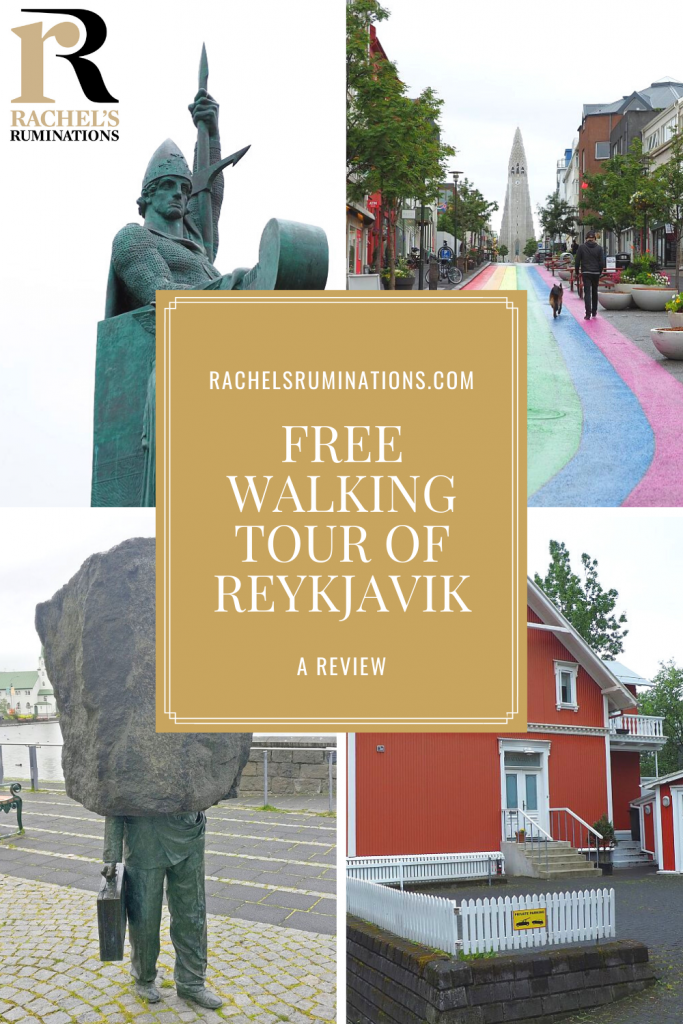


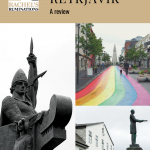

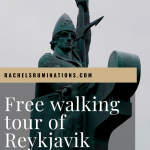
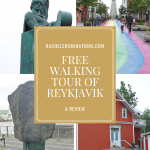

I have followed free walking tours in many European cities (London, Madrid, Rome, Bucharest, Naples, Copenhagen, Krakow, Pamplona etc).
The most of them are excellent!!
I recommend them!!
It’s a clever gimmick, isn’t it? They’re sure to be good because they know they’ll get less if they’re not. I usually end up paying the same as or even more than I would for a normally-priced tour!